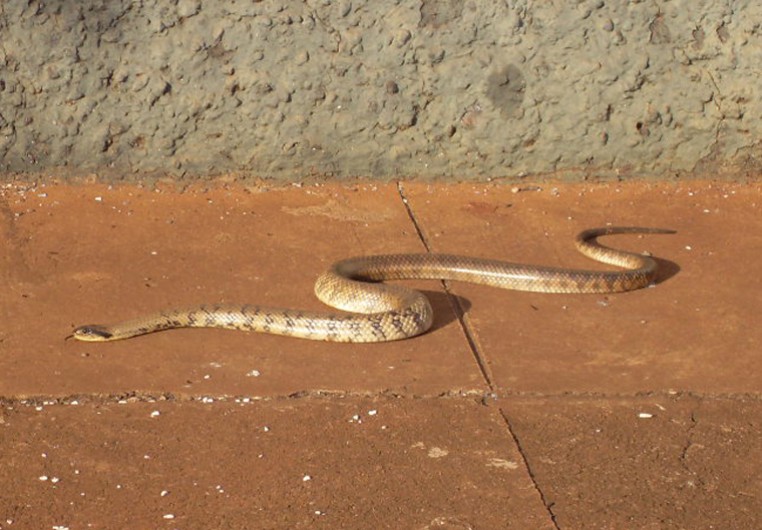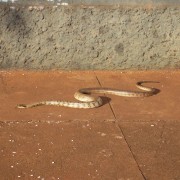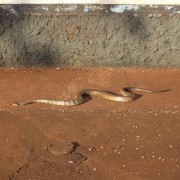Biodiversity
 False Water Cobra
Hydrodynastes gigas | Duméril, Bibron & Duméril, 1854
False Water Cobra
Hydrodynastes gigas | Duméril, Bibron & Duméril, 1854

Characteristics: Medium to large serpent measuring up to about 2.5-3m in length. Yellowish brown coloring with black spots stained all over its body. It has a strong black stripe behind its eyes. When threatened, it flattens the region of its "neck" and strikes. It has a distinctive tooth on the top of its mouth, which is used to pierce the lungs of amphibians.
Distribution: French Guiana, Suriname, Bolivia, Paraguay, Argentina, Peru, and Brazil. It is widely distributed in Brazil, and can be found in Amazonas, Pará, Amapá, Rondônia, Goiás, Rio Grande do Sul, Paraná, and São Paulo.
Habitat: Open formations such as savannas and scrublands, preferably. Often associated with wetlands, floodplains, and water bodies.
Habits: Terrestrial, semi-aquatic, and preferably diurnal.
Diet: Fish, frogs, and small rodents. It has a rather curious tactic, using the tip of its tail to poke frogs hidden in the water to capture them when they jump.
Breeding: Oviparous, laying 8 to 36 eggs per laying.
UFRA: Species spotted only in Wetlands with Herbaceous Plants.





